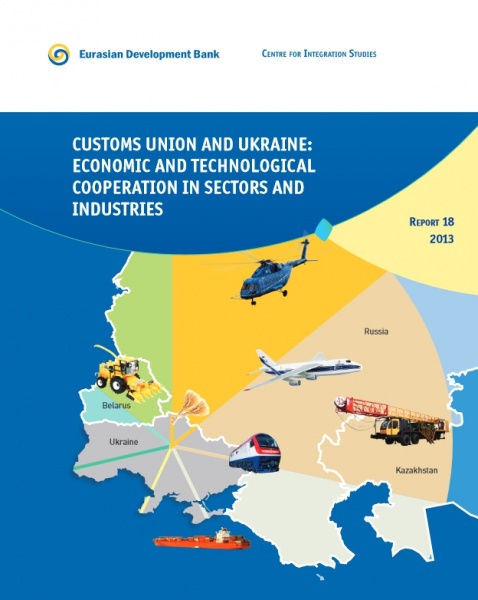Customs Union and Ukraine: Economic and technological cooperation in sectors and industries

-
Report
PDF, 6.22 Mb
Ukraine’s economic losses from winding down projects with the SES in high-tech industries will be at least 1.5% of GDP. The most sensitive consequence can be the termination of joint work on new technologies. These estimates are presented in the report titled Economic and Technological Cooperation between the SES and Ukraine by Sectors published by Eurasian Development Bank’s (EDB) Centre for Integration Studies.
The authors of the report study the issue of industrial and inter-industry links between the SES economies and Ukraine and come to a conclusion that cooperation between enterprises has been maintained in practically all segments of the processing industries, while in certain sectors of mechanical engineering (shipbuilding, aircraft engineering, nuclear industry) this cooperation has no alternatives. The possible worsening of trade and economic ties between the countries can result in addition risks for them.
In addition, cooperation between producers in the SES countries and Ukraine is a key condition in ensuring the high level of competitiveness in the most important markets. This affects, in particular, transport engineering. Ukrainian manufacturers depend, to a significant extent, on imports from Russia. Thus, they are interested in the development of cooperation to procure necessary components and preserve their key market to sell finished products.
The links in the aircraft and helicopter engineering sector are also very strong. According to estimates, an increase of US $1,000 in the Russian aircraft production causes an increase in Ukrainian exports to Russia by US $45 and an increase in output by US $119. In other words, if the Russian aircraft sector grows by US $1 billion, the Ukrainian aircraft industry will show a production growth of US $120 million.
If the high level of trade and economic relationships between the SES countries and Ukraine is maintained, this will help the Ukrainian economy to preserve, in the short and medium term, an acceptable level of competitiveness in its key processing sectors and create additional conditions for their further upgrade and advancement.
The report states that if the average annual growth in the Ukrainian economy is 3% and if it maintains the current level of cooperation with Russia, the share of cooperation ties in mechanical engineering can grow to 3.4% of Ukrainian GDP (US $12.7 billion a year) by 2030, compared to the current figure of 2.5% (US $4.2 billion).
The authors of the report point out in this context that, although the level of mutual trade in products with a high level of processing between the SES countries and Ukraine remains rather high, an alarming tendency towards a reduction in mutual trade in high-tech sectors has already emerged. “Keeping this trend in mind, a coordinated industrial and innovations policy is needed, which should be aimed at ensuring the most comprehensive use of the existing production potential and an effective distribution of investment resources,” states the report. The development of roadmaps for sectoral cooperation between the SES countries and Ukraine should become one of the elements of this policy.
Economic and Technological Cooperation between the SES and Ukraine by Sectors was prepared by experts from Belarus, Kazakhstan, Russia and Ukraine under the leadership of the Russian Academy of Sciences’ Institute of Economic Forecasting and Ukraine’s Institute for Economics and Forecasting.
